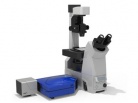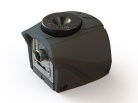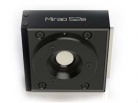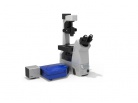STORM (Stochastic Optical Reconstruction Microscopy), or stochastic optical reconstruction microscopy, is one of the methods of super-resolution microscopy using light flashes to activate photoactivatable fluorescent molecules. The photoactivation of molecules occurs based on their stochastic (random) properties.
STORM is (along with PALM and FPALM) one of the other techniques of SMLM - single molecule localization microscopy. In the original version of STORM, organic dyes with longer photodegradation times and photoswitchable fluorescence were used instead of PAFPs(photoactivatable fluorescent proteins). These dyes can be switched from the fluorescent (ON) to the non-fluorescent (OFF) state and vice versa by means of light pulses with suitable parameters (especially with different wavelengths).
Due to the three-dimensional structure of the cells, super-resolution in all three dimensions is required to image them, which can be achieved by localizing individual PSFs not only in the horizontal plane (x,y) but also in the axial axis direction (z). For this reason, the 3D STORM method was introduced, which uses an astigmatic view of the fluorescent probe molecules realized by a cylindrical lens added in front of the microscope camera. This causes the PSF of the point source to change to elliptical (from circularly symmetric) and its ellipticity increases with the distance of the molecule from the focused plane - this method makes it possible to image cellular structures with super-resolution in both lateral and axial directions.




